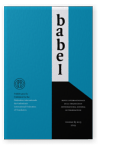Vol. 65:5 (2019) ► pp.678–695
Los universales de localización
Un paso más allá tras los universales de traducción
Dans cet article, le nouveau concept de « localisation universelle » a été établi après avoir trouvé la présence d’universels de traduction dans le domaine de la localisation de jeux vidéo, c’est-à-dire leur traduction et leur adaptation à d’autres marchés, indépendamment de leur pays d’origine. Après avoir revu le concept des universels de traduction et défini la méthodologie de l’article, les universels de localisation ont été illustrés à l’aide d’un corpus créé en utilisant les images de différents jeux vidéo. Le corpus inclut plus particulièrement les jeux vidéo Pokémon Sapphire et Pokémon Alpha Sapphire, sortis en 2002 et 2014. Ils ont été analysés à l’aide du logiciel d’analyse de données qualitatives et quantitatives, connu sous le nom de MAXQDA. Celui-ci a permis de créer et d’annoter des corpus d’images et de démontrer l’existence d’universels de localisation et d’en tirer des conclusions intéressantes.
Article outline
- 1.Introducción
- 2.Los universales de traducción
- 2.1Interferencia
- 2.2Equivalencia
- 3.Los universales de traducción en las imágenes
- 4.Metodología
- 4.1El proceso de anotación y herramientas utilizadas
- 4.2Materiales
- 5.Universales de localización
- 5.1Explicitación
- 5.2Implicitación
- 5.3Normalización
- 6.Recapitulación y reflexiones sobre los universales de localización
-
Referencias -
Videojuegos -
Webgrafía
Article language: Spanish
